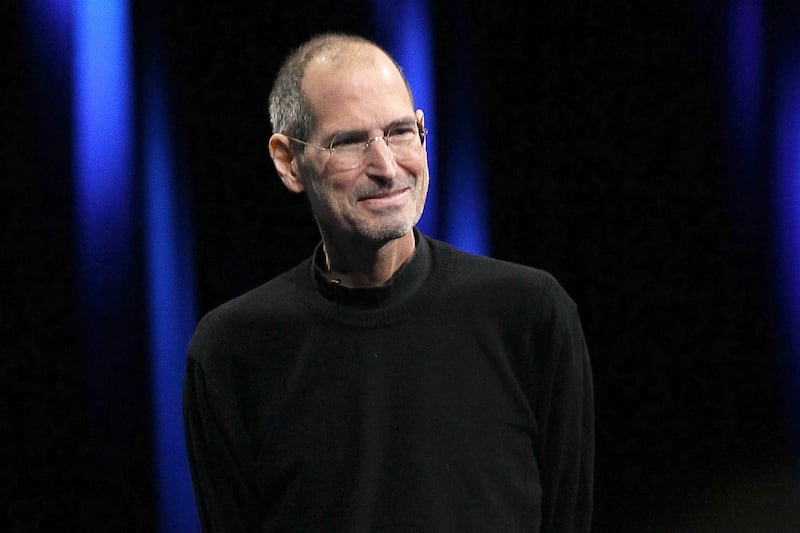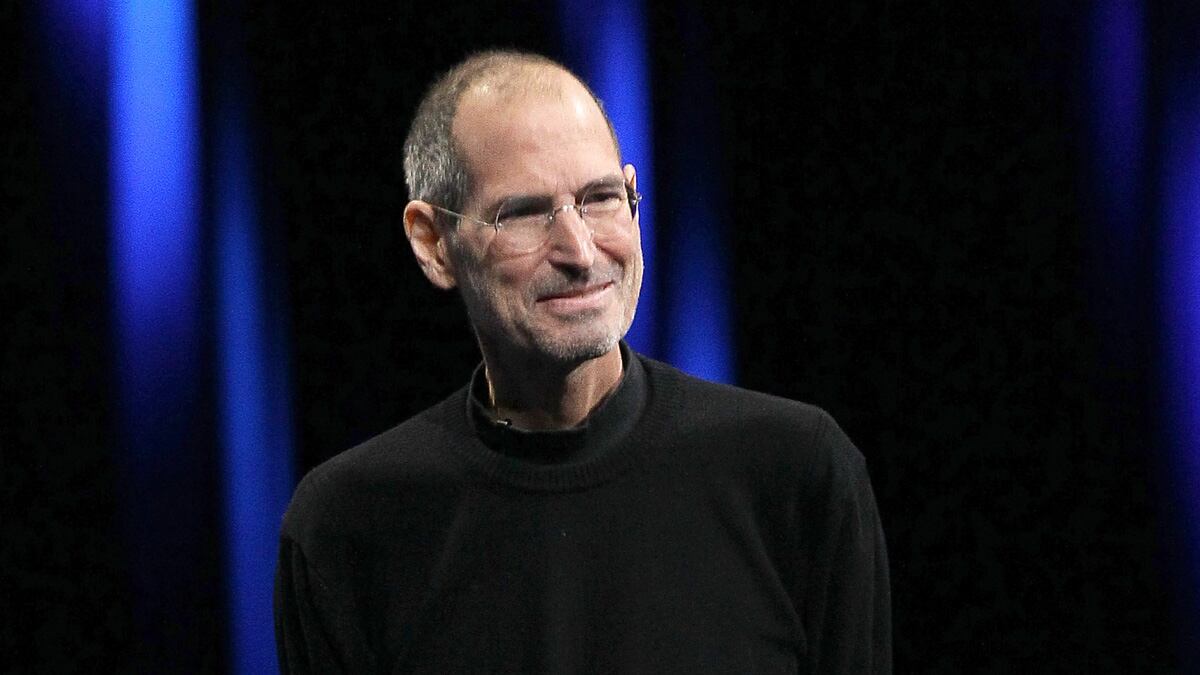When he died, I heard about it first on my iPhone. A friend texted, the first of many, and I remember a hollow feeling as though the bottom had abruptly vanished—like the sudden drop on a carnival ride that you know is coming, but it gets you anyway. In the months that followed I discovered that a lot of people had felt something similar—something stirring and unexpected. Many people I know who don’t think of themselves as sentimental felt shaken by his passing.
I think it was the devices. They’re the metaphor we use to see the world, and Steve Jobs painstakingly designed that metaphor. We’ve all been engaged in a decades-long design conversation with Steve Jobs. How could we not have felt something when it ended?
And only now with distance, a year after his passing, a thought keeps occurring to me. It feels hard to say it even now, but I can’t stop turning it over in my mind.
I find myself thinking that Jobs’s death may the best thing that could’ve happened to Apple.
Of course, I’m not an ordinary user. I have fought for more than two years to draw attention to the brutal labor conditions under which all our electronics are made. I’m a storyteller, and I performed my stories night after night in city after city. A year ago today, no one in my audiences had heard of Foxconn, much less known that nearly half of all the electronics in the world are made there.
And today I am controversial, because I broke the rules in trying to bring this story to light. I said things that weren’t true. To some I will always be a fabulist, a scoundrel, and a liar. To others I have been an integral part of the change that has happened. I believe the truth lies somewhere in between.
It has been quite a year.
After my notorious episode of This American Life aired, it was followed by an incredible and shocking series from The New York Times documenting conditions at Foxconn. Apple began to make concessions in the face of public pressure and hired an auditing company on their dime to show they would change.
It was straight out of Steve Jobs’s playbook, because that’s how he did it when it happened before. In 2006, when the media first outed Apple for horrendous labor conditions, the company did the very same thing by hiring Verité, an auditing firm. Once the media heat died down, its mission was accomplished. The galling thing wasn’t that it never solved the abuses in its supply chain, it was that it never intended to.
Part of understanding the genius of Steve Jobs is understanding the entirety of who he was—his documented indifference, even cruelty, to other human beings, including those closest to him. There’s a reason he was a master of designing devices that couldn’t talk back and obeyed at a touch or command. He loved pushing his teams at Apple as hard as he could until they broke. It’s not a surprise that he avoided the labor issues even when they were staring him in the face.
Apple has run itself this last year as though Steve could be back any day. But death can be an opportunity for change. Believe me: it is never too late to have the hard conversations, examine your work with a critical eye, take your medicine, and begin the work of real reform.
Consider the recent Apple Maps kerfuffle. The latest version of Apple’s iOS operating system stopped using Google Maps, and the new version has some surreal errors right out of the gate—like losing track of Coney Island, whole towns in Australia moving miles inland, and travel directions occasionally spiked with LSD. Users grumbled, the Internet grumbled, and even the Apple-loving media grumbled. In the end, Apple actually apologized. More astonishing, they suggested we all use other companies’ apps until they have their house in order.
In a million years, can you imagine Steve Jobs doing this? In fact, he once faced a similar situation, when Apple had a disastrous rollout of MobileMe, its now canceled Web 2.0 service. But the story that caught fire wasn’t the disaster itself—it was the blow-by-blow description of Steve royally chewing out the members of the MobileMe team. By leveraging his own reputation he achieved his goal: people felt empathy with Apple and against the idiots on MobileMe.
Steve Jobs was a master of this—of turning a real negative into a possible positive. In fact, that was always my best hope for my monologue about Apple’s supply chain—I built it with the dream that if I could catch Jobs’s attention, he’d see that paying his workers a living wage and making his devices ethically is something Apple could absolutely afford ... and, under his Svengali-like control of the press corps, use as a selling point that would appeal directly to Apple’s target audience. It seemed like exactly the kind of idea Jobs had a history of adopting after opposing, the way he suddenly started making his computers more environmentally friendly after years of actively fighting with Greenpeace.

I did eventually get one Steve in to the show—Steve Wozniak, Apple’s cofounder. But Jobs kept tight control over the public image of both Apple and Foxconn, and for the most part he was successful. Under Steve Jobs’s watch even Wired magazine ran a remarkable cover story on Foxconn about labor in which the writer never spoke to a single worker.
But now, without Steve’s Teflon coating, things are starting to stick to Apple. The reports from the audits Apple paid for have been glowing, but then there’s news of college students conscripted by Foxconn into forced labor to make the iPhone 5. And independent NGOs like SACOM report workers being forced to work off the clock. Most recently a Foxconn facility erupted into massive riots in the wake of the launch of Apple’s latest gadget. The gap between Apple’s paid-for reports and conditions being reported on the ground is growing. Without Steve around to dazzle us, it gets easier to ask tougher questions.
I’ve been asking tougher questions of myself, too. After This American Life retracted my story about Apple and Foxconn because of my fabrications, I was devastated. I had disappointed everyone who had believed in me, done harm to the causes I had been fighting for, and wounded those most important to me. But after the grief and excuses, I took a long, hard look inside myself.
And then I went back to work.
I revised my show to remove anything contested and worked to make it stronger. The truth is that if I had been asking all these years for Apple to make an ethical iPhone, I needed to make an ethical monologue. It was difficult to keep performing in city after city under the glare of the media and the scandal, but I know it was the right thing to do.
Today everyone recognizes the name Foxconn, and stories about overseas labor are finding increasing coverage everywhere. They are read and discussed and debated. There’s been a shift in how we view our relationship to these devices, because the human relationships that make them are finally on the table. It may even be a crack in the armor of how we talk about all overseas labor, because we love the devices Steve made for us so very much.
As the most powerful tech company of our time, Apple has the resources to truly make ethical devices and pay a living wage to its workers without smoke and mirrors—and we all know that if it actually did this, it has the marketing savvy to turn it into a golden opportunity.
You can imagine the ad campaign already: against a white background, interviews with the workers who make our iPhones, whom Apple is unafraid to claim as its own.
It would absolutely kill the competition.
And perhaps that’s the best way to respect Steve Jobs’s legacy: dream up a trick that Jobs himself didn’t pull off.





